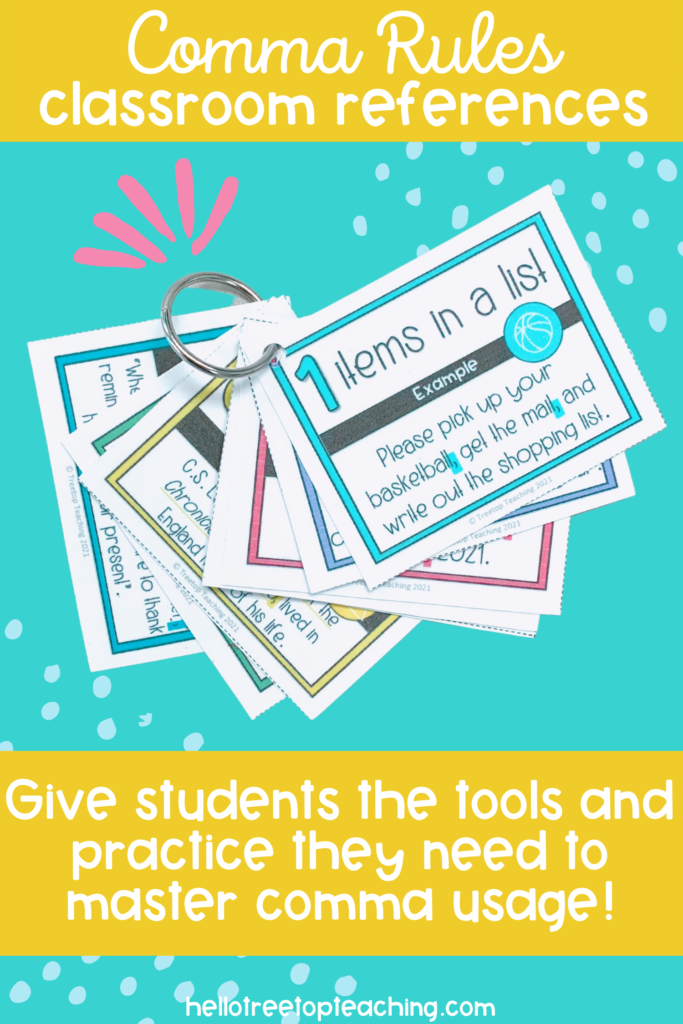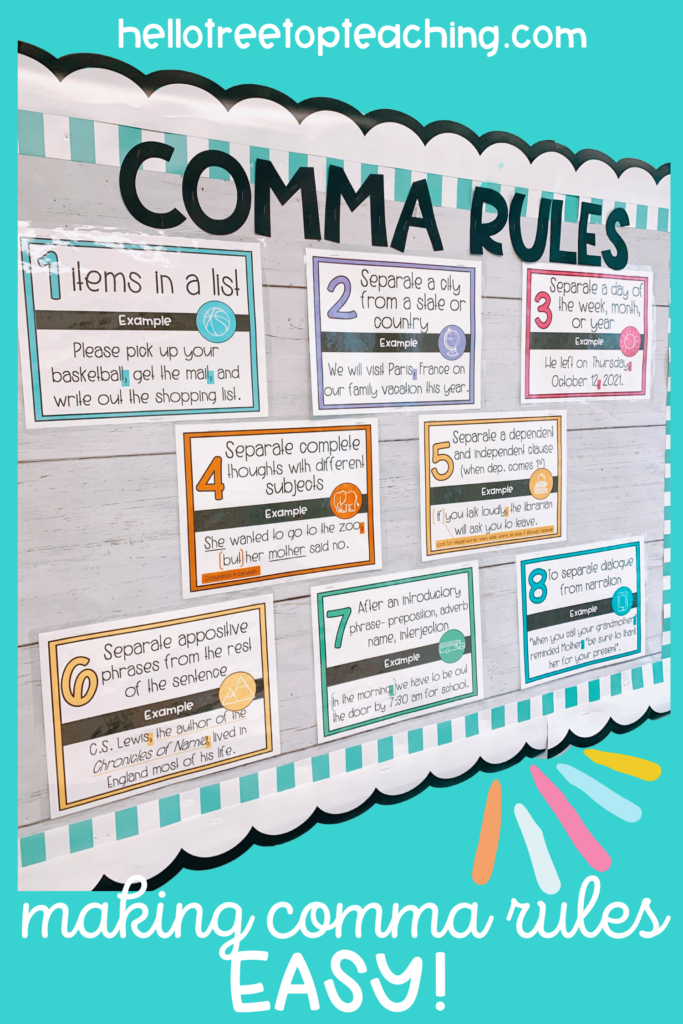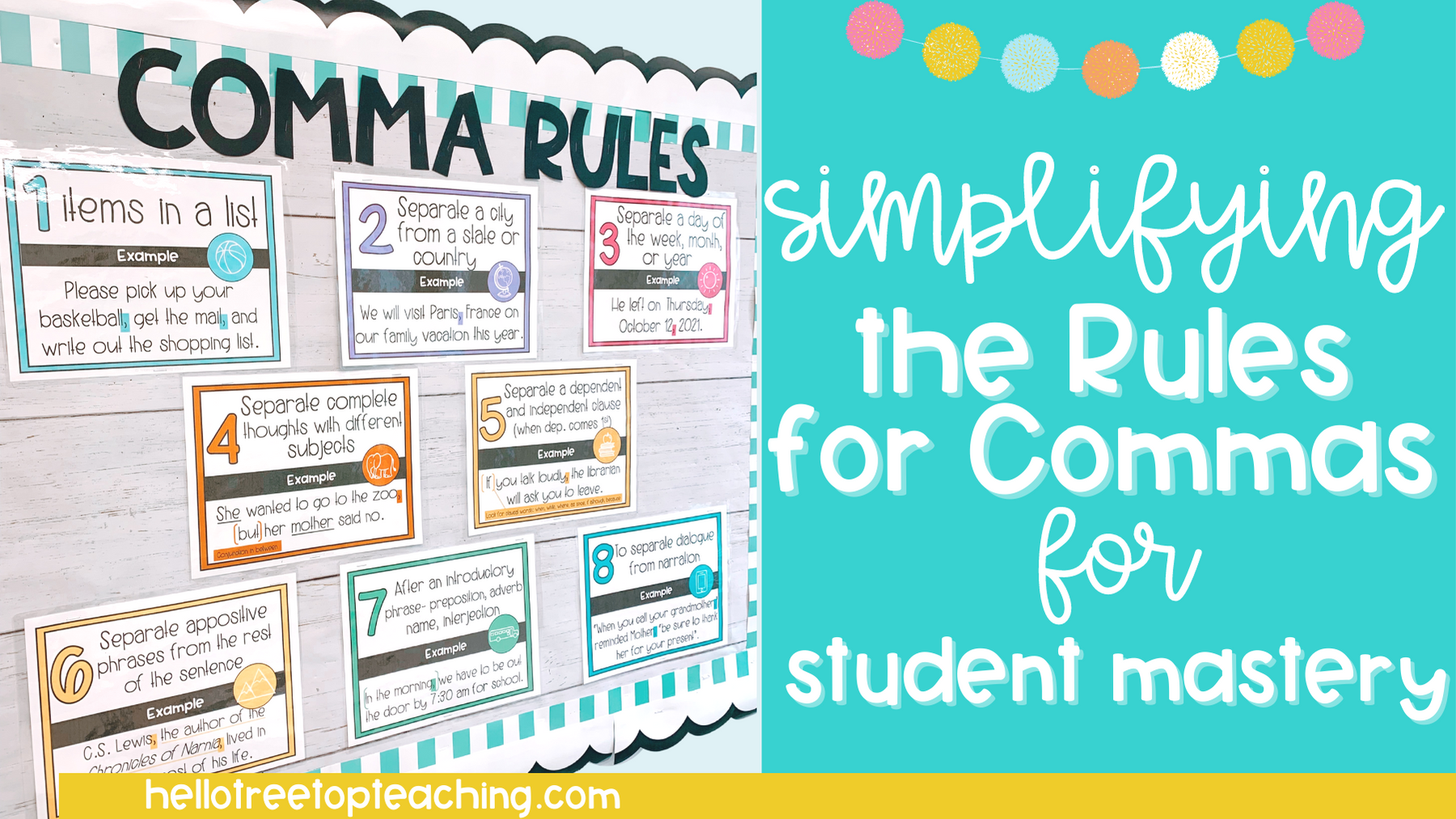The rules for commas can be overwhelming not just for students but for teachers as well!
I can remember the first time that a student asked me why a comma went somewhere. I told them it was because there was a pause in the sentence. In my defense, that’s what I had always been told. But then I had students using commas instead of end marks and commas in places wherever you would take a breath in the sentence.

Some students had too many. Some students had too few. It was a mess!
So I sat down and figured out what the rules for commas are and how I could teach them to my students in a way that they use them correctly in their writing. So many times students can use them correctly on a worksheet, but when it comes to using it in their writing, it’s like they’ve never been taught.
Introduce the Comma Rules One at a Time
One of the biggest mistakes I made when teaching commas to my class was giving them the full set of rules and assuming that they would be able to use them all. This was not the case.
The following year I used the formula easy plus one. So I would teach the first comma rule until it was easy. Then I would add one more rule. When I added the new rule, we didn’t forget the previous rules, building up to all 8. However since we had practiced them until they were easy, it did not feel so overwhelming.

Scaffolding this comma instruction was the key to making it stick in their mind and show up in their writing. When students have a chance to master a small bit before moving on, it moves more deeply into their long-term memory. And obviously the whole reason we teach commas is so that they will use them correctly in their own writing.
I have a scaffolded set of rules for commas practice HERE!
Require Students to Write the Rule for Commas They Place
A lot of students, me included, were taught that you will place a comma wherever there’s a pause in a sentence. I got really good at placing most commas using this rule. However I had absolutely no idea WHY a comma should go there.
When it came to teaching commas in my classroom, I knew that I would need to require students to place the rule number above each comma to show me that they knew WHY a comma went there. You will quickly notice that some students can place the comma but have no idea why it should go there.

How This Looks in a Lesson
Give your students sentences that are missing commas and have them write in where the commas should go and why. This is the most effective way that I have found to teach them the comma rules. When I taught and reviewed in this way, the commas actually showed up in their own independent writing- correctly!
I printed these cards in a very small size and placed magnets on the back. Then as we edited sentences for commas on the board together, they had to pick up the rule number that went with that comma and place it over the comma.
Keep the Lesson on Rules for Commas Short

When I say keep it short, I mean 10 minutes tops! I usually write a sentence up on the board and give students a minute to place the commas and rule numbers on their own. Then I call up a student or two to add in the commas and the rule numbers. We have genuine conversations in the context of actual comma usage.
Once we have learned each of the eight comma rules one at a time, and I feel like the students have mastered each one, then we move on to independent practice. For this, I have the students edit two to three sentences for missing commas with rule numbers. Then we review the answers together and discuss the why of comma placement. I have them use their individual set of reference cards attached in their binder on a ring.
Have Rules for Commas References for Students to Easily Access

When we’re in the throes of learning commas, I have reference materials everywhere! I have a bulletin board with the rules for commas. There are small pieces up on the board to move when we edit sentences. I give the students a set of laminated cards on a ring to clip in their binder to reference when they need it. And I have a one-page reference sheet that they keep in their writing notebook for easy access as well.
Implement in Your Class today!
If you want to teach comma usage to your students in a way that they will truly master them, but you don’t feel like you have the time to find all of the sentences for them to edit, this set is for you!
With scaffolded notes and practice where students practice just one new rule at a time while still reviewing the previously learned rules, this set is the perfect print-and-go option.
If you would like the full classroom set to teach commas that includes the notes, the practice and task cards, and the classroom posters and references, you can find that here!




One Response
Good post.